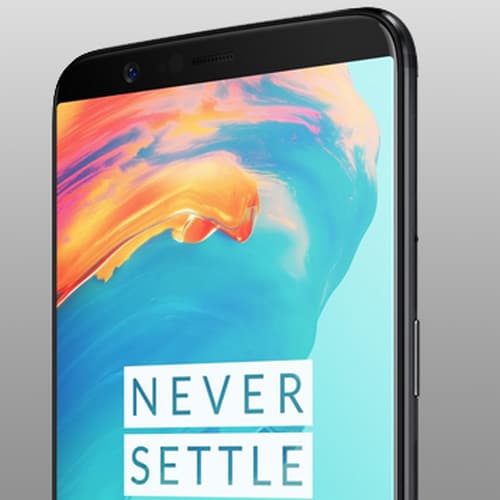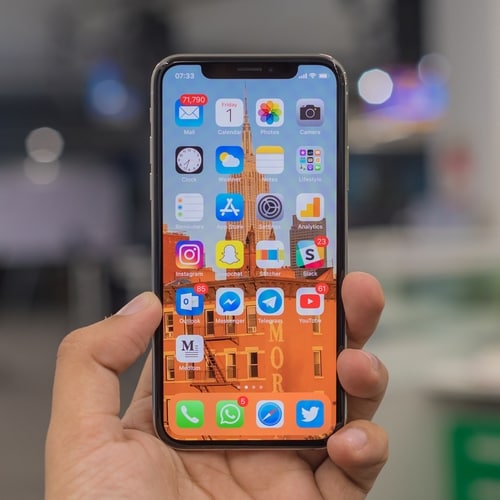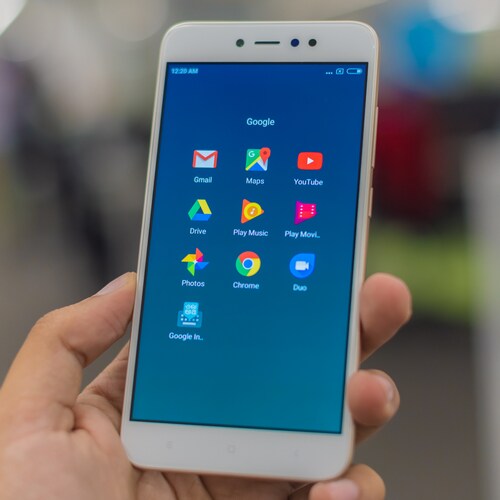We are approaching the end of 2017. While the year in smartphones took off with a boring start with the flagships with typical high-end specifications, Samsung, Google and Apple made it exciting enough to get everyone hooked and interested in smartphone technology all over again.

The Samsung Galaxy Note 8 is the best from Android at the moment
2017 will also be the year, where machine learning and artificial intelligence made it to smartphones. While artificial intelligence is the next level and the broader picture, machine learning forms the building blocks of AI.
Google more than anyone else spearheaded the machine learning movement, one that should see more Android smartphone manufacturers follow suit, doing more with less, taking hardware performance to its limits.
So without further ado, may I present to you our list of top picks when it comes to flagship smartphones that are priced over the Rs 30,000 price bracket.
#1 The Samsung Galaxy Note 8: The all-rounder
While Samsung needs a thunderous applause (and a pat on the back) for the massive comeback for both the gorgeous Galaxy S8 and the Galaxy Note 8, the bigger sibling takes the top spot on our flagship ranking.

It looks and feels goregous!. Image: Tech2/Rehan Hooda
The Galaxy Note 8 did not just make us forget all of those “fiery” Note 7 memes, but it cemented Samsung’s spot in the smartphone space, by offering not just great design, but innovations in AI (Bixby) and bragging rights that could silence all those OnePlus fans when it came to numbers.

The S-Pen was an added bonus. Image: Tech2/Rehan Hooda
While the design was breathtakingly stunning, Samsung drew the line and set new standards for premium flagships, one that many other manufacturers still find hard to follow. In short, the Note 8 was the premium flagship smartphone to separate the boys from the men.
What makes it great:
> Great design
> Amazing camera performance (still and video)
> Breath-taking Super AMOLED Infinity Display,
> S Pen with new messaging features
#2 Apple iPhone X: New technologies and gutsy design
While Samsung did send across some strong tremors in the smartphone space, Apple looked like it was prepared. Prepared to be “courageous” once again or so it seemed from the several leaks and rumours that precede every iPhone launch. This also meant that we expected to see a few more parts falling off the next new iPhone.
But 2017 was different. Apple launched not the usual two but an expected third tenth anniversary iPhone X as well.

The iPhone 8, iPhone X and the iPhone 8 Plus seen side-by-side. Image: tech2/Rehan Hooda
And so it had to be special, which in Apple’s understanding of things meant, taking a few parts off. After the 3.5 mm headphone jack (with the iPhone 7) Apple decided that it was time, it killed the Home button along with Touch ID on a smartphone that would reflect the company’s future plans.

A class apart! Image: tech2/Rehan Hooda
It was a gutsy move, not just from a design perspective, but also from a UI standpoint because millions of iPhone fans would now have to relearn a few things (apart from emptying their pockets). The lack of a home button meant that more gestures would now have to be introduced on what now appeared to be a Palm Pre-like webOS interface.
With the lack of Touch ID, Apple introduced Face ID. This reduced the need to press down on a button, and instead just lift the phone to unlock.
Learning curve aside, the design changes added a few things. Instead of a normal display, iPhone X users now had an extra notch at the top to deal with. But they seemed to have taken it in stride as iPhone sales show no signs of slowing down. At the moment, it’s just Apple that’s trying to keep up with production.
The iPhone X is also the most expensive production smartphone to be introduced ever. With price tags in India now starting from a staggering Rs 92,430 (for the base model).
What makes it great:
> Stunning design
> Unbeatable video capture with 4K 60 fps recording
> Zoom camera with dual OIS
> Face ID
> That price tag!
#3 Google Pixel 2: The best camera by a mile
While Samsung showed the world how powerful hardware can produce some breath-taking low light photos, Google had other plans. As with everything Google, the search giant wanted to prove a point about how important software is to the smartphone ecosystem.
And so it did! While the ‘Made by Google’ event saw plenty of hardware announcements, it was clear that machine learning was the central theme. And with that Google also announced the Pixel 2 with machine learning smarts.
Its simple looks can be deceiving considering the machine learning punch it packs in. Image: tech2/Rehan Hooda
Sprinkles of artificial intelligence and machine learning already exist in Google’s ecosystem of services and applications, but Google wanted to show outright what the power of software combined with machine learning is truly capable of.
Since 2016, every other smartphone manufacturer out there was pulling out dual camera smartphones from their magic hats. So gutsy Google in 2017 (the year of dual cameras), took what appeared to be a risk, by launching the Pixel 2/2 XL with a single sensor camera. But this single sensor (both in the front and back) used Google's machine learning smarts to outwit not just Android and iOS competition but laid the foundations of what we should expect from smartphone imaging in the future.
There is a lot going on behind that piece of glass. Image: tech2/Rehan Hooda
Google proved to the world that it could take better photographs using just one camera and the power of machine learning. The Pixel 2 smartphone used the power of Google’s HDR+ photos, machine learning and some mind-bending algorithms to produce class-leading Portrait photos using a single camera not just in daylight, but low light as well. Google basically turned smartphone imaging into a science and for that we are thankful!
What makes it great:
> That camera and the science behind the imaging
> Unadulterated Android experience
> Machine learning software bits
#4 HTC U11: The ‘no frills’ premium flagship
So you are not yet caught on to the taller display sporting flagships? Instead, you love bezels because of their practicality? And you wants an “everyday smartphone” that delivers the basics expected from flagships. That’s what we got when we reviewed the HTC U11.

The HTC U11 is your everyday flagship.
The smartphone was HTC’s long-awaited comeback and it sadly came at a time when a part of its team was acquired by Google (that’s why the Pixel 2 is more practical than fancy).
And what a comeback it was! A new design philosophy, a stunning camera, a plain Jane but accurate Super LCD display, and top notch specifications (at least for the variant that came to India).
In short, HTC in 2017 finally satiated the thirst of HTC fans around the world and delivered a flagship that does not miss out on a single new technology. It is the practical all-rounder that added “sense” to the sensible for smartphone flagships in 2017.
What makes it great:
> Bold design
> Use of a brilliant LCD display in 2017
> U Sonic audio
> The strongest performing Android smartphone
#5 OnePlus 5T: Value for money
The OnePlus is a smartphone that we personally “love to hate”. It’s the “bad boy” of the smartphone industry, offering overkill specifications (who needs 8 GB RAM?), but then calling itself “practical”.
This year, OnePlus is on our list as it is hard to ignore the value for money the device offers at Rs 32,999.

Those fancy covers are totally worth their price tags as well.
Nowhere else will you get this level of performance, an 18:9 display (sorry OnePlus 5 owners) and great battery life in a thin and light package that sounds too good to be true, given its pricing.
You also get the standard OnePlus “bragging rights” when you buy one online.
What makes it great:
> Hardware in numbers
> Accessible flagship level performance
> Great software
2017 saw some recent tech cementing itself in the premium smartphone segment. We still lead the dongle-life as wireless technologies (like Bluetooth audio and wireless charging) have yet to evolve to a level where they are practical and offer more benefits over conventional wired systems.
With talks about AI, coming from every smartphone manufacturer this year, it’s easy to say that 2018 will see plenty of automation, heavy use of machine learning in premium flagship smartphones. Stuff that will trickle down and benefit even the mid and budget segments.
Who knows we may also see some radical design decisions such as folding smartphones. So here's looking forward to more action in this space next year.
Published Date: Dec 26, 2017 11:18 am | Updated Date: Dec 26, 2017 11:18 am





















